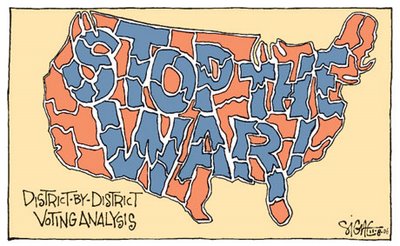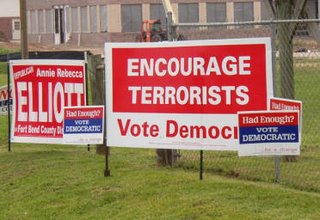As regular readers will know I did a great deal of research a few years back on a fringe subject known as The Gemstone File. I have put some of the information I came across on two sites that the interested reader can find under Research Projects at right.
Among other subjects The Gemstone File contain information about the JFK assassination, information which the author of the Skeleton Key to the Gemstone File, one Stephanie Caruana, said came from a personal contact of Bruce Roberts, author of the Gemstone File. This contact she said was a CIA-connected Cuban by the name of Antonio Iglesias, whose sister married Roberts' brother. I have been able to verify the existence of this individual, if not his connection to Bruce Roberts. His full name is Antonio Iglesias Pons. A CIA document that I obtained from the National Archives describes him as a "former employee" of the Central Intelligence Agency.
I recently came across an article on the internet that mentions him. I will quote it in full.
The night that terrorism planted death in Holguin's coastal town of Boca de SamaAntonio Iglesias also figured in a year 2000 assassination attempt on Castro in Panama.
By Alexis Rojas
The night was hot, light breeze and calm sea. People sleeping. It seemed that the night was going to be as common as so many others in this quite corner of Holguin's coast, but it was not like that.
That night of October 12, 1971 came carrying death with her. The sequels of that criminal action are yet fresh in many people, in the mulilated foot of Nancy Pavon, in the bullet still lodged in the body of Jesus Igarza, in Angela's scars, and in the eight indelible marks left in the legs of El Chino Escalante.
And in the tombs already cold, but never forgotten, where are kept the loved bodies of Lidio Rivaflecha Galan, in Santa Ifigenia cemetery in Santiago de Cuba city, and of Ramon Siams Portelles, in Banes graveyard.
Both Rivaflecha and Siams lost their lives that sad night.
But the call for justice is still present in the voice of Josefa Portelles, mother to Ramon, who was only 24 then and left behind a six-month-old girl who could no longer be kissed by her father.
But also in Lidio's wife, Juana Vargas: "… just horrible, I thought I'd also die of so much suffering, however, I had to push very hard to raise four children that never more had their father around…"
And in the never silenced voices of Boca de Sama dwellers that have assumed Fidel's words when the Crime of Barbados: "When an energetic and forcefull people cry, injustice trembles."
THAT NIGHT
For sergeant Carlos Escalante Gomez (El Chino), the sea is life itself.
The big sea is joined to the story of his life and the source of his living as well. He believes he cannot breathe without the sea scent.
In that time, 35 years ago, Carlos Escalante commanded the small Guard Coast garrison, in Boca de Sama, at the entrance of the homonymous bay, near Guardalavaca beach.
In his house closed to the sea, we talked of that day when terrorism seized this part of Cuba.
It was a dark night. A pirate boat approached the coast; a smaller vessel left the mother boat and came closer to the coast. The terrorist command was on board a speedboat.
Escalante was returning to the town accompanied by Lidio Rivaflecha Galan, lieutenant from Cuba's Ministry of Interior (MININT) and the officer from the State Security there, some hours ago he had met some collaborators from nearby Guayacanes village, and was informed on the presence of some strange elements around.
It was not ten yet. Before leaving, Escalante ordered Julio Ricardo -professor from the local Militia School- to lead the checkpoint. At about eight o'clock, Julio was informed that a funny noise was coming by the bay entrance.
Then Ricardo decided to send Rafael Tejeda Toledo with four other men with a RPD 44 machine gun, to head towards the fire position in the windward end of the bay, near a lighthouse.
Militiamen Ramon Siams Portelles and Esteban Batista were on duty in Boca de Sama small dock. When Escalante and Rivaflecha arrived they met these men right in their post, just then militiaman Romilio Zaldivar arrived and reported he had heard noises in the town's old store and seen lanterns flashing.
Still unaware of the threat ahead, Escalante and Lidio went on walking.
Siams and Batista were posted on sentry duty there. But already next to the town's store, Siams joined them and asked them to be involved; therefore, Escalante gave him back his weapon and took Lidio's revolver.
They went on walking meanwhile the 16 very poor houses from the coastal town were sleeping. The small power generator was not working at that late hour. Complete darkness.
Then silence was broken… The Cuban coast guard men approached the place. "Halt!," they cried, just then the artful firing began.
A machine gun blast hurt Escalante in both legs, as long as two mercenaries shoot at Lidio and Siams, killing them to death. The night was filled with pain and blood.
The mercenaries fled because they didn't want to jeopardize their lives, but before reembarking they left behind a box full of incendiary bombs (May be they wanted to burn the town) and even a boat anchor.
Among the mercenaries engaged in the terrorist attack were the noted Miami mafiosi Antonio Iglesias Pons, CIA agent and head of the command and Santiago Alvarez Fernandez-Magrina who has admitted, without even blushing, he is a closed friend to also noted murderer Luis Posada Carriles.
From a mother boat there came the machine-gun attack over the town of fishermen and peseants. Their houses became the target of cruelty. Cuban coast guard men fired back. The pirates aided by darkness fled North, where some eight miles away the mother boat was waiting for them...
Antonio Iglesias Pons, known as "Tony". Age: 65. Height: 169 centimeters. Normal build. White skin, light-colored eyes, gray hair with pronounced balding. Cuban, resident in the United States. Has U.S. citizenship.
Ongoing links with Luis Posada Carriles. He has been used as a messenger to deliver the money to be used in the organization of the assassination plot against Cuban President Fidel Castro. He participated in the acquisition of weapons.











































